Equipment Types
There are many types of equipment that can be used on a Pipeline construction job. It is important to know which types of equipment may be used, along with the details about each type of equipment.
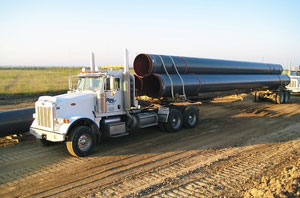
STRINGER TRUCK
A Stringer Truck utilizes a typical tractor suitable for pulling heavy loads of pipe. The tractor pulls a specialized trailer constructed to pull long loads of pipe up to 80 feet long. The stringer trailer is steerable and uses a cable system built to rotate the rear axles of the trailer so that the trailer follows the tractor. This simple mechanism allows the long loads to track the tractor and enables the unit to make sharper turns on the highway without impeding traffic and on the construction right-away. Although the tractor operates as any commercial motor vehicle the driver needs to develop special skills in maneuvering the trailer.
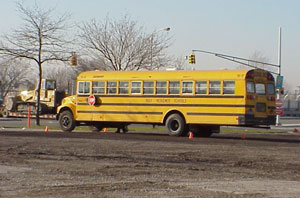
CREW BUS
Since pipelines are built across all kinds of terrain workers cannot take their personal vehicles to the work site. The work crew will park at the pipe yard or other location and are shuttled to the work site on a bus. The Crew Bus acts not only as a means of transporting the crew but can also act as the break or lunch room where a work crew can get out of the weather or other elements. Crew bus drivers need a minimum of a Class “B” CDL with a passenger endorsement for a vehicle that can carry in excess of 16 passengers. The busses can vary in size depending on the crew and many contractors use old school busses configured for the job.
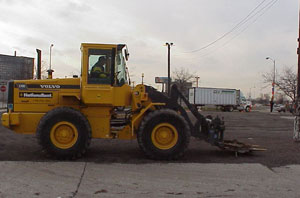
FORK LIFT
Forklifts are utilized in many situations during pipeline construction. Most commonly they are used in the supply functions lifting and transporting parts and in warehouse operations. Forklifts are also used to on the right-away and rough terrain to assist the crew in the construction process. Forklifts come in many sizes and Forklift operators are required under OSHA to receive training in accordance with the type of equipment they are operating.

FUELER
Equipment on a pipeline job must be refueled on a regular basis. You cannot take the equipment to the local gas station. You must bring the fuel to the equipment. Fuel trucks can vary in size and type but generally all have the same purpose. The Fueler transports fuel to the right-away or other work locations, and then fuels the equipment. The driver must have a Class “A” or Class “B” CDL, depending on the type of truck used. The driver also needs a HAZ-MAT endorsement on the CDL. A periodic HAZ-MAT training and refresher training is required. Additionally, the Fueler needs to have a full understanding of the types of fuels used in particular equipment. Putting the wrong fuel in a piece of equipment can cause serious damage to the equipment, which would likely result in the termination of the Fueler.
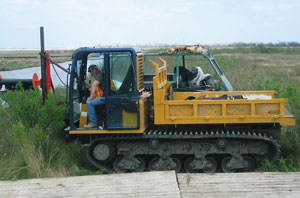
MOROOKA
A Morooka (tracked truck) is a rubber-tracked truck that comes in different sizes and are used in many different ways on the pipeline. It can carry heavy loads and transport men/women and materials into places where regular trucks can’t reach.
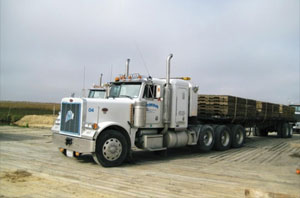
FLOAT/FLATBED
A Float/Flatbed is a combination vehicle. Its consists of a Tractor and 48’ or 53’ flatbed trailer or a step deck trailer. Float/Flatbed drivers haul a wide variety of material on the pipeline. Most Float/Flatbed drivers haul digging mats for the majority of the jobs.
Event and Class Schedule
There are currently no scheduled classes.
